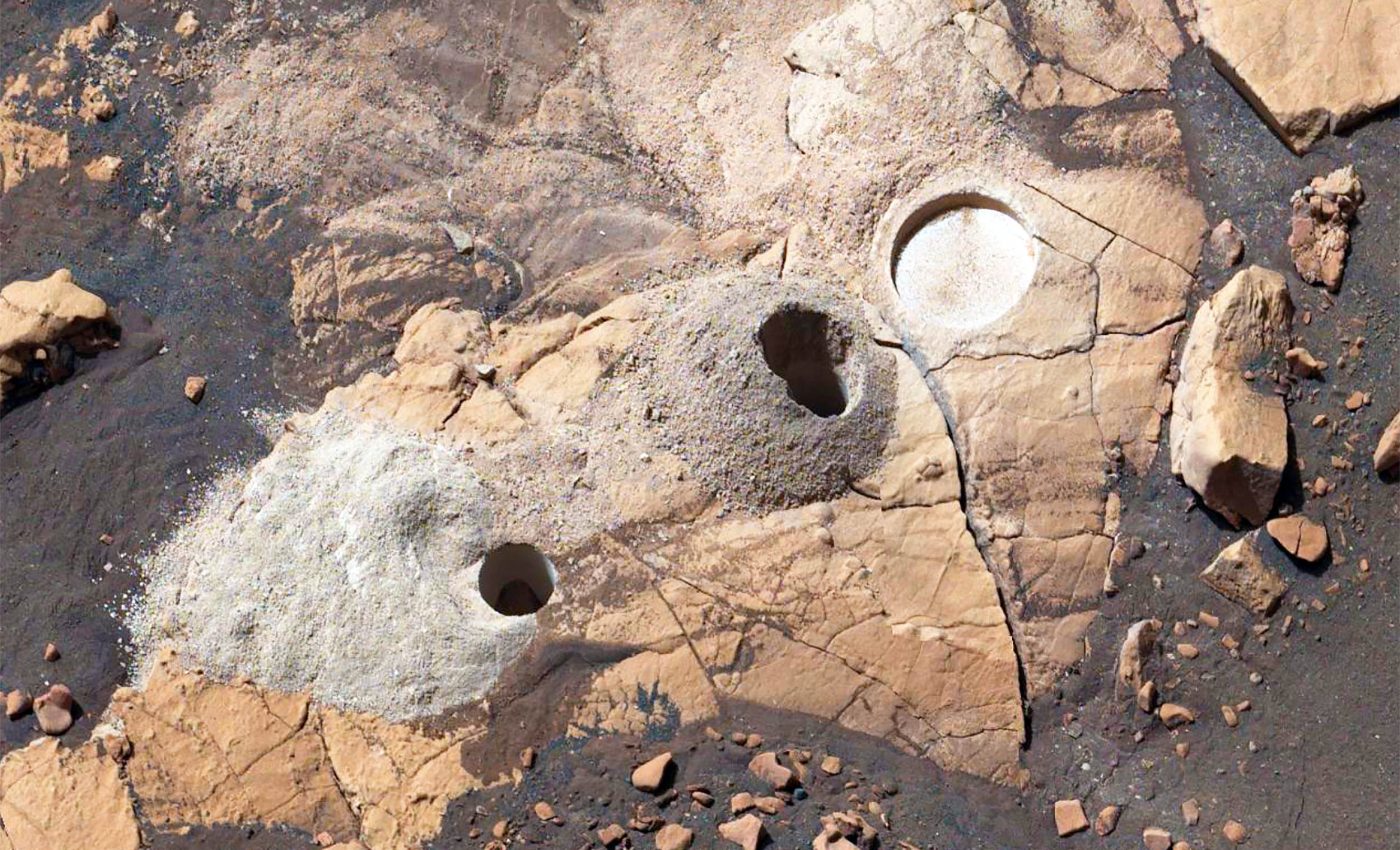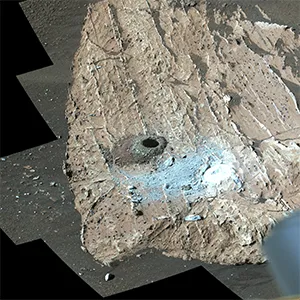
NASA explains how they will handle Mars rock samples when they are returned to Earth
Could something – or someone – have ever lived on Mars? A handful of rocks sitting inside the Mars Perseverance rover might finally help us find out if NASA finds a way to return those samples to Earth.
The rocks come from Jezero Crater, a dry, dusty basin where a river used to flow into a lake about the size of Lake Constance.
Billions of years ago, the basin may have been warm and wet enough to support life. Now it’s just frozen dirt and rock. No water. No obvious signs of life. But Mars keeps its secrets.
That’s why NASA’s Perseverance rover has spent the last four years gathering clues. So far, it’s collected 33 samples of rock, soil, and air.
Each sample holds pieces of the Red Planet’s history – and maybe, just maybe, evidence of something more.
Mars rock samples have odd patterns
Some of the most exciting clues so far come from a rocky slope in Jezero Crater called “Cheyava Falls.” Researchers recently noticed small, spotted markings there – tiny splotches that look like a leopard’s coat.
These markings contain two minerals that, on Earth, usually show up in mud or decaying plants and animals.
That doesn’t mean there’s algae lurking in those Mars rocks. But it’s enough to raise eyebrows. Scientists want to bring these samples to Earth to find out more.
“We need to bring samples from Mars back to Earth and examine them here,” said Christian Schröder, a scientist with the Max Planck Society (MPS) and co-author of a new study.
“The relatively small and few scientific instruments that Perseverance carries on board offer only very limited possibilities.”
That’s because a rover the size of a car can’t carry the same powerful lab equipment we have on Earth.
On Mars, we can take basic measurements. On Earth, we can break rocks apart, scan them under powerful microscopes, and look for tiny chemical clues that life might have left behind.

Bringing the samples back to Earth
A group of 21 researchers from NASA, ESA, and top institutions across the U.S., Canada, and Europe have spent the last two years figuring out how we’d handle these Mars rock samples once they arrive.
“Examining rocks and samples of the Martian atmosphere on Earth will open a new chapter in Mars research and help us understand our neighboring planet much better than we can today,” said Andreas Pack from the Geosciences Center at the University of Göttingen.
The plan goes like this: once a future mission brings the samples back to Earth, they’ll be sent straight to a special building called the Sample Receiving Facility.
This lab will have 18 instruments, including an X-ray tomograph, an electron microscope, and mass spectrometers. Scientists will catalog the samples and check them for any biological hazards.
Even though it’s extremely unlikely that anything alive hitched a ride in those sample tubes, scientists want to be absolutely sure before opening them.
Then, scientists across the world will apply to get a piece of the Martian samples to study. Only the best-equipped labs will be allowed to run tests on the material. Once that door opens, Mars research could leap forward in a big way.
What’s in the Mars rock samples
Back in Göttingen, Pack’s team is especially interested in the gases trapped inside the sample tubes – particularly oxygen isotopes. Isotopes are different versions of the same element.
Measuring how much of each type is present can reveal how Mars’ atmosphere has changed over billions of years.

Metal isotopes in the rocks
MPS researchers will look at the metal isotopes inside the rocks. These hold clues about how old the rocks from Mars are, where they came from in the solar system, and how Mars evolved over time.
Some of the same techniques were used to study samples from the asteroid Ryugu. This isn’t easy work.
To analyze the samples, experts will need to dissolve parts of them in acid – destroying the material in the process. That’s why every single test has to count.
“In Göttingen, we have the expertise and infrastructure to analyze Mars samples at the highest international level,” said Thorsten Kleine, Director at MPS.
And that’s not all. Schröder’s also planning to use particle accelerators to fire gamma rays at the samples. This might reveal how iron minerals in Martian rock interacted with organic material – another piece of the life puzzle.
Still waiting for the return flight
There’s just one problem: the samples aren’t here yet. And we don’t know exactly when they will be.
NASA and ESA had originally aimed to bring them back by the early 2030s, but that timeline has already shifted a few times. The current mission plans are still uncertain.
Meanwhile, other countries are racing to bring back Mars samples too. China, for example, hopes to return material from Mars as early as 2030.
Whenever these rocks arrive, they’ll kick off a whole new phase of research – one that could answer some of the biggest questions humans have ever asked. Did Mars once have life? Could life still exist somewhere beneath its surface?
We don’t know yet. But inside a rover parked on a dry, red crater, the clues may already be waiting.
The full study was published in the journal Astrobiology.
—–
Like what you read? Subscribe to our newsletter for engaging articles, exclusive content, and the latest updates.
Check us out on EarthSnap, a free app brought to you by Eric Ralls and Earth.com.
—–













